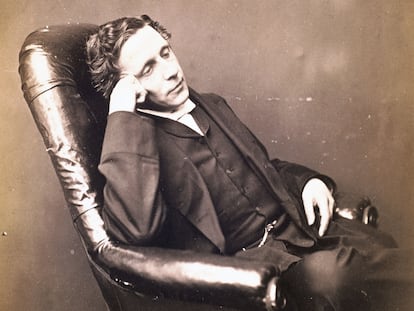Trick questions


No reader has been willing to demonstrate that last week 's seven "infinite" cigarettes are in full contact—each one with the others—nor has he offered a solution other than the one presented. Here's another:

The question arises again: some contacts are obvious, but others are not. How can we prove, for example, that cigarettes C1 and C2 touch each other?
Regarding the stretched spring , here is what Francisco Montesinos comments: “If the radius of the coils r remains constant during the elongation due to a great resistance to the curvature of the spring, a contradiction arises, because if the pitch of the deformed helix is py and if we consider the spring with a single coil, its length will be √[(2pi.r)^2+p^2] and not (2pi.r) as one might think. It can be rightly argued that this last r is a different r' from the previous r, but then we should clarify that the radius that can remain constant during the elongation is that of the cylindrical envelope of the spring, not that of the coil.”
Justice and mathematicsReferences to Poisson's ratio in recent weeks have prompted a number of comments concerning the French mathematician's work on the application of probability calculus to the assessment of judicial errors. In 1837, Simon-Denis Poisson published an essay entitled "Research on the Probability of Judgments in Criminal Matters and in Civil Matters." This was not the first attempt to apply probability calculus to the assessment of judicial proceedings: the Marquis de Condorcet, in 1785, had published his " Essay on the Application of Analysis to the Probability of Decisions Rendered to the Plurality of Voices," and Pierre-Simon Laplace, in his "Philosophical Essay on Probability" (1814), had also attempted to calculate the probability that the judgment rendered in a trial would be correct. Poisson's main contribution was to introduce available statistical data and the law of large numbers into his analyses to determine the estimated frequency of an event—for example, an erroneous judgment—over a given period of time. His work was not well received, either in the judicial or scientific spheres, although it would eventually reveal his considerable methodological interest. But that is for another article.
Questions and obstaclesOver the past few weeks, we've seen a few examples of "cooked" riddles and trick questions, which seems like a good excuse to suggest a few (and maybe some of them will be cookable). While the mere warning that the questions are "tricky" diminishes their effectiveness, you'll want to be careful not to stumble into any of the following:
1. In four consecutive years, how many months have 31 days, how many have 30, and how many have 28?
2. Is a question whose only possible answer you know in advance always superfluous?
3. What was the highest mountain in the world before it was known to be Mount Everest?
4. Why do most dogs sleep more hours in January than in February?
5. What animal hunts mice, meows and scratches, but is not a cat?
6. What happens if an irresistible force collides with an immovable object? (As a curious anecdote, I first faced this question, as a child, in a comic book in which Superman travels back in time and collides with himself.)
Do you want to add another user to your subscription?
If you continue reading on this device, it will not be possible to read it on the other device.
ArrowIf you want to share your account, upgrade to Premium, so you can add another user. Each user will log in with their own email address, allowing you to personalize your experience with EL PAÍS.
Do you have a business subscription? Click here to purchase more accounts.
If you don't know who's using your account, we recommend changing your password here.
If you decide to continue sharing your account, this message will be displayed indefinitely on your device and the device of the other person using your account, affecting your reading experience. You can view the terms and conditions of the digital subscription here.

He is a writer and mathematician, a member of the New York Academy of Sciences. He has published more than 50 popular science works for adults, children, and young adults, including "Damn Physics," "Damn Mathematics," and "The Great Game." He was the screenwriter for "La bola de cristal."
EL PAÍS







